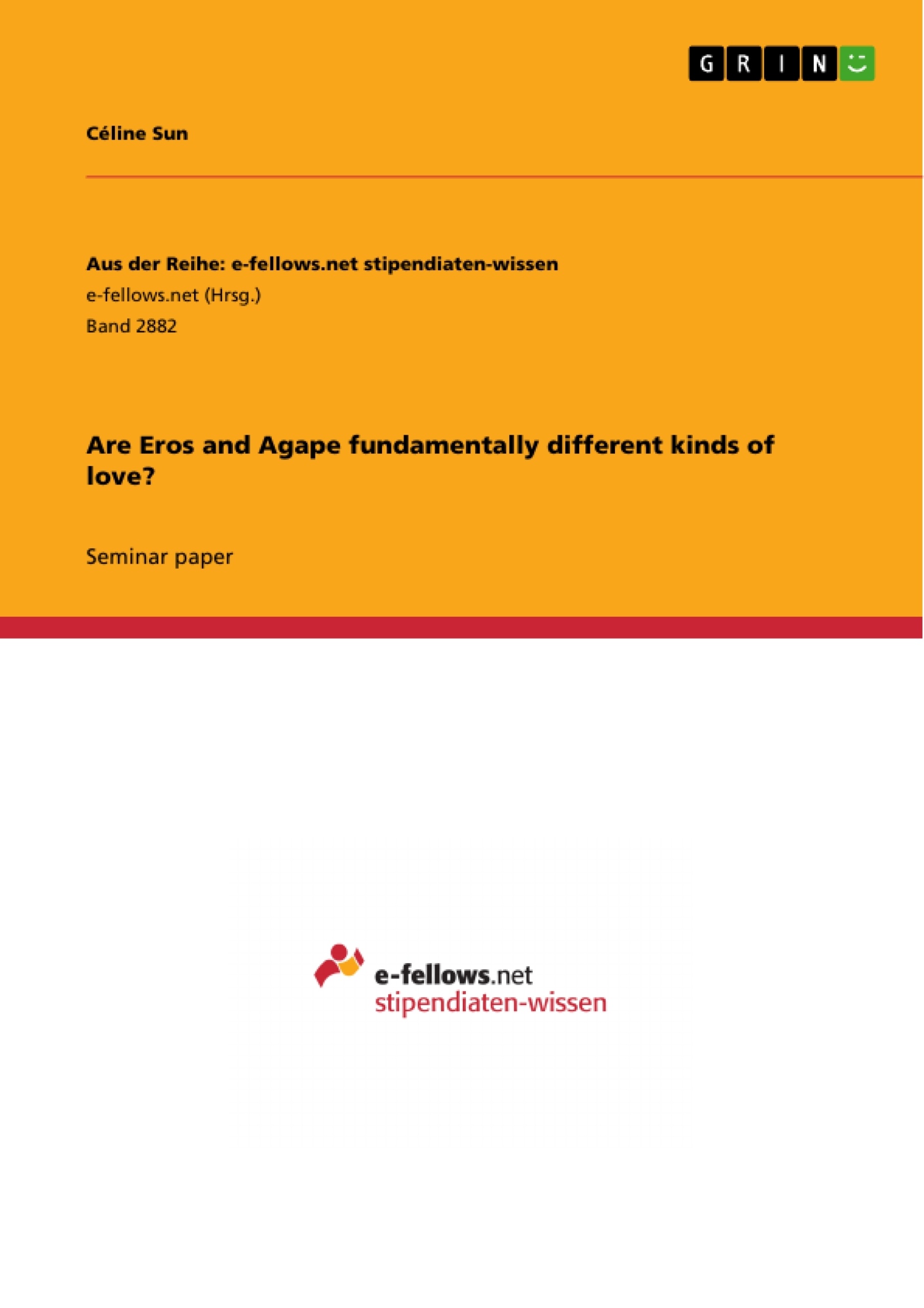Are Eros and Agape fundamentally different kinds of love? Throughout the history of Christianity, theologians have struggled with the relation between these two forms of love. This relation has been interpreted very differently with regard to questions such as: Is there a conceptual primacy of one over the other or should they be regarded as equally standing next to each other? How is the prevalence of the two forces to be balanced? And most importantly – given the indisputable differences between the two, how can they be mediated in the encounter between the Divine and the human?
On one side of the extreme, a fundamental separation between them is postulated, with Agape attributed to God only and Eros relegated to the human sphere. Such a separation was popularized by the Swedish theologian Anders Nygren. He strongly rejects the Neo-Platonic influence on Christianity which puts at its centre the human striving towards the Divine through Eros in hopes of designing a purified, superior Christian doctrine.
Texts by Richard of St. Victor and Catherine of Siena who stand within the Neoplatonic and Mystic traditions of Christianity argue that it is the balanced incorporation of the idea of Eros (as opposed to its full rejection) which enables an understanding of a reciprocal loving relationship by making room for human activity in building it. This understanding is shown to be reasonable within the context of modern theology by laying the foundations for a conceptual re-interpretation of the doctrine of creation and incarnation which enables a fundamental realignment of the relation between Eros and Agape.
Table of Contents
- Introduction
- Part I: Nygren's Mutilation of Christian Love
- Part II: Eros and Agape in Classical Texts
- a. Richard of St. Victor
- b. Catherine of Siena
- C. Discussion: Eros and Agape in Richard and Catharine compared
- Part III: Eros and Agape in Modern Theology
Objectives and Key Themes
This essay explores the complex relationship between Eros and Agape, two distinct forms of love, within the context of Christian theology. It aims to challenge the notion that Eros is solely a human form of love and Agape exclusively divine, arguing that a balanced understanding of both is crucial for comprehending the nature of love in both its human and divine dimensions.
- The nature of Eros and Agape in Christian theology.
- The influence of Neoplatonism on Christian concepts of love.
- The role of human desire and longing (Eros) in achieving spiritual union with God.
- The relationship between Eros and Agape in achieving a reciprocal and balanced love.
- The implications of a balanced understanding of Eros and Agape for modern theology.
Chapter Summaries
The essay begins by examining Anders Nygren's influential theory on the contrasting nature of Eros and Agape, where Agape is solely attributed to God and Eros relegated to the human sphere. It critiques Nygren's arguments, contending that his approach simplifies both human and divine nature, failing to acknowledge the complexities and richness of the love relationship between the human and the divine.
Part II delves into the Neoplatonic and Mystic traditions of Christianity, focusing on the works of Richard of St. Victor and Catherine of Siena. This section explores how their incorporation of Eros into their understanding of love leads to a more nuanced and balanced view of the relationship between God and humanity. Richard's concept of "thirsting for God" is presented as an example of Eros that leads to humility and submission, ultimately culminating in a love that encompasses both the human and the divine.
Part III, which explores the relationship between Eros and Agape in modern theology, is excluded from this preview to avoid spoilers.
Keywords
The main keywords of this essay include Eros, Agape, Christian theology, Neoplatonism, Richard of St. Victor, Catherine of Siena, love, desire, divine love, human love, and spiritual union.
- Quote paper
- Céline Sun (Author), 2018, Are Eros and Agape fundamentally different kinds of love?, Munich, GRIN Verlag, https://www.grin.com/document/448932




